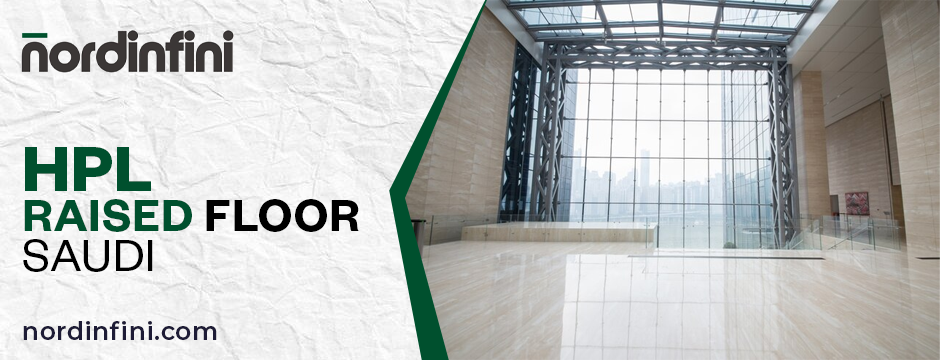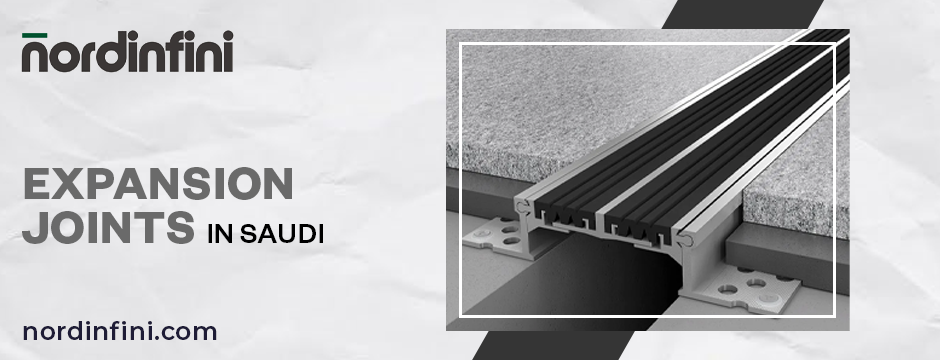Data Center Flooring: Why HPL Raised Floors Are the Go-To Choice
In the world of modern data centers, every design element plays a crucial role in ensuring operational efficiency, safety, and scalability. Flooring is no exception. As the backbone of any data center infrastructure, flooring systems must meet stringent requirements to accommodate the unique demands of the environment. Among the various flooring options available, High-Pressure Laminate (HPL) raised floors have emerged as the go-to choice for data centers worldwide. This blog explores why HPL Raised Floor Saudi has become the preferred solution, delving into its unique benefits, features, and applications.
Understanding HPL Raised Floors
HPL raised floors consist of panels made from durable core materials like calcium sulfate or steel, topped with a high-pressure laminate surface. These panels are supported by an understructure of pedestals and stringers, creating a void beneath the floor. This void is essential for housing cables, airflow systems, and other utilities, making HPL raised floors a practical solution for data centers.
The high-pressure laminate finish is specifically designed to withstand heavy loads, resist wear and tear, and maintain aesthetic appeal over time. These characteristics make HPL raised floors a superior choice compared to traditional flooring systems in high-demand environments like data centers.
Key Benefits of HPL Raised Floors for Data Centers
1. Enhanced Load-Bearing Capacity
Data centers are home to heavy equipment like servers, racks, and cooling units, all of which demand flooring systems that can handle significant weight. HPL Raised Floor Saudi is specifically designed to support both static and dynamic loads, ensuring exceptional structural integrity. The reinforced core materials distribute weight evenly across the flooring system, preventing sagging or damage, while the robust understructure ensures reliability and stability even under constant stress from heavy equipment.

2. Superior Durability and Longevity
The high-pressure laminate surface is engineered to withstand the daily wear and tear of high-traffic environments. HPL surfaces resist scratches, stains, and impacts, maintaining a polished and professional look. Additionally, the core materials are highly resistant to moisture, fire, and impact, ensuring the flooring system’s longevity even in demanding conditions, making it a reliable long-term solution for data centers.
3. Optimized Cable Management
Efficient cable organization is critical in data centers, where tangled wires can lead to operational inefficiencies and safety hazards. HPL Raised Floor Saudi provides ample underfloor space, offering sufficient room for routing power, data, and communication cables. This setup reduces cable clutter, enhances airflow, and allows for faster maintenance, upgrades, and troubleshooting, minimizing downtime and improving overall operational efficiency.
4. Improved Airflow Management
Cooling is crucial for maintaining the efficiency and safety of data centers, and HPL raised floors play a vital role in enhancing thermal management. Perforated panels and airflow tiles integrated into the flooring system allow cool air to circulate efficiently, targeting equipment that generates the most heat. This not only improves cooling performance but also reduces energy consumption, significantly lowering operational costs while preventing equipment from overheating.
5. Fire Resistance
Safety is a top priority in data centers, and HPL raised floors contribute significantly to fire protection. The laminate surface and core materials are engineered to resist high temperatures, minimizing the risk of fire spreading. These floors meet stringent fire safety regulations, ensuring a secure environment for both critical equipment and staff, making them an indispensable safety feature.
6. Aesthetic Appeal and Customization
While functionality is essential, aesthetics also play an important role in creating a professional and cohesive environment. HPL raised floors come in a wide variety of colors, patterns, and textures, allowing for customization that aligns with the facility’s branding and design. This ensures a balance of practicality and visual appeal, delivering a high-tech and professional look without compromising on performance.
7. Ease of Maintenance and Accessibility
Maintaining a clean and efficient workspace is simple with HPL Raised Floor Saudi. The panels can be easily lifted to provide quick access to the subfloor, simplifying repairs and modifications. Additionally, the laminate surface is resistant to dirt and grime, making it easy to clean and ensuring a hygienic, professional atmosphere. With minimal maintenance requirements, these floors remain a practical and reliable choice for data centers.
Applications of HPL Raised Floors in Data Centers
1. Server Rooms
HPL raised floors are perfectly suited for server rooms, where heavy racks and equipment demand a stable, durable surface. With their exceptional load-bearing capacity, they provide the strength to support significant weight while ensuring long-term structural integrity. Additionally, the flooring’s efficient cable management capabilities make it easier to organize power and data cables, minimizing clutter and optimizing infrastructure performance.
2. Network Operation Centers (NOCs)
In network operation centers, seamless integration of monitoring systems, extensive cabling, and cooling solutions is essential for efficient operations. HPL raised floors enable flexible space utilization, offering the adaptability to accommodate changes in layout or equipment as needed. The underfloor void provides sufficient space for cable routing and cooling mechanisms, ensuring NOCs function smoothly and without interruptions.
3. High-Density Data Centers
High-density data centers house a significant amount of equipment, leading to increased cooling and cable management demands. HPL raised floors are designed to address these challenges effectively, providing scalability to accommodate high loads and advanced thermal management. Their compatibility with perforated panels and airflow tiles ensures proper cooling, reducing the risk of overheating and ensuring uninterrupted operations.
4. Edge Data Centers
Edge data centers are smaller, localized facilities that require versatile and efficient solutions. HPL Raised Floor Saudi is ideal for these environments due to its adaptability, ease of installation, and ability to optimize space. They provide the flexibility to meet the unique demands of compact setups while maintaining functionality and reliability.
Features That Set HPL Raised Floors Apart
1. Anti-Static Properties
Static electricity can pose a serious threat to sensitive electronic equipment. HPL raised floors are designed with anti-static properties to minimize the risk of static discharge, protecting valuable hardware and ensuring operational continuity.
2. High-Impact Resistance
The laminate surface is engineered to withstand heavy impacts, reducing the risk of damage from dropped tools or equipment. This feature ensures long-term durability and reduces maintenance costs.
3. Environmental Sustainability
Many HPL raised floor systems are made from eco-friendly materials and meet green building standards. This makes them a sustainable choice for organizations aiming to reduce their environmental footprint.
4. Modular Design
The modular nature of HPL raised floors allows for easy installation and reconfiguration. This flexibility is particularly beneficial in data centers, where layouts may need to be adjusted to accommodate changing technology and operational needs.
Steps to Choose the Right HPL Raised Floor System for Your Data Center
- Assess Your Requirements: Determine the load-bearing capacity, cooling needs, and cable management requirements of your data center.
- Evaluate Material Quality: Ensure the core materials and laminate finish meet industry standards for durability and performance.
- Consider Customization Options: Choose finishes and designs that align with your data center’s aesthetics and branding.
- Verify Safety Standards: Look for fire-resistant and anti-static properties to ensure compliance with safety regulations.
- Work with a Trusted Supplier: Partner with a reputable provider who can offer high-quality products and reliable installation services.
Common Mistakes to Avoid When Installing HPL Raised Floors
1. Underestimating Load Requirements
Failing to account for the weight of equipment can lead to structural issues over time. Always ensure the flooring system can handle the expected load.
2. Neglecting Airflow Management
Inefficient cooling can result in equipment failure and increased energy costs. Plan for adequate airflow during the design phase.
3. Overlooking Maintenance Needs
Choose a flooring system that allows easy access to the underfloor space for maintenance and upgrades.
4. Choosing Substandard Materials
Low-quality materials may save costs initially but can lead to higher maintenance expenses and reduced lifespan. Invest in high-quality HPL raised floors for long-term benefits.
Future Trends in Data Center Flooring
1. Integration of Smart Flooring Technologies
Smart flooring systems with embedded sensors can monitor load, temperature, and airflow in real-time, providing valuable data for optimizing operations.
2. Increased Focus on Sustainability
As environmental concerns grow, there is a rising demand for eco-friendly flooring solutions made from recyclable and sustainable materials.
3. Advancements in Anti-Static Technology
Innovations in anti-static properties will further enhance the safety and reliability of HPL Raised Floor Saudi in data centers.
4. Customizable Modular Designs
Future designs will likely emphasize greater customization and modularity, allowing for seamless upgrades and reconfigurations.
Bottom Line
HPL Raised Floor Saudi has solidified its position as the go-to choice for data centers due to its unmatched durability, functionality, and adaptability. From enhancing load-bearing capacity and optimizing airflow to providing superior cable management and aesthetic appeal, these flooring systems offer a comprehensive solution for the unique demands of data center environments.

Nordinfini specializes in transforming modern spaces with cutting-edge HPL raised flooring solutions. Designed for efficiency and style, our floors enhance cable management, airflow, and accessibility while ensuring durability and high load-bearing capacity. Ideal for data centers, server rooms, and high-density setups, Nordinfini’s versatile systems provide the perfect balance of functionality and aesthetics for today’s advanced infrastructures. By investing in high-quality HPL raised floors, organizations can ensure operational efficiency, safety, and scalability, paving the way for a future-ready data center infrastructure. Apart from this, if you are also looking for expansion joints in Saudi, you must visit our website now!
FAQ
Can HPL raised floors handle the weight of high-density servers and racks?
Yes, HPL raised floors are specifically designed to handle high static and dynamic loads. Their reinforced core materials and robust understructure ensure stability and structural integrity, even under the heaviest equipment.
How do HPL raised floors improve cooling efficiency in data centers?
HPL raised floors can be customized with perforated panels and airflow tiles, which allow cool air to circulate directly to heat-generating equipment. This enhances thermal management, reduces energy consumption, and prevents overheating.
Are HPL raised floors easy to maintain and access for upgrades or repairs?
Absolutely! HPL raised floors feature removable panels, making it simple to access the underfloor space for cable adjustments, repairs, or system upgrades. The laminate surface is also easy to clean, ensuring a professional appearance.
Yes, HPL raised floors are specifically designed to handle high static and dynamic loads. Their reinforced core materials and robust understructure ensure stability and structural integrity, even under the heaviest equipment.
HPL raised floors can be customized with perforated panels and airflow tiles, which allow cool air to circulate directly to heat-generating equipment. This enhances thermal management, reduces energy consumption, and prevents overheating.
Absolutely! HPL raised floors feature removable panels, making it simple to access the underfloor space for cable adjustments, repairs, or system upgrades. The laminate surface is also easy to clean, ensuring a professional appearance.






